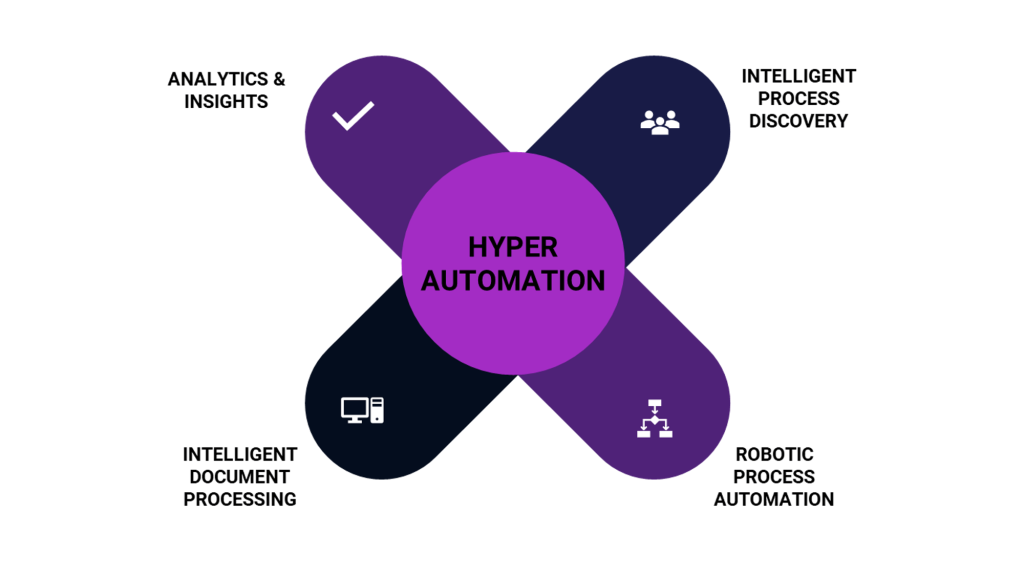E-Commerce Automation: Streamlining Online Business
E-commerce has revolutionised retail, allowing anyone to set up an online store and sell to customers worldwide. However, running an online business comes with significant operational challenges. Inventory management, order processing, customer service, marketing, and other tasks can easily overwhelm a small team or solopreneur. This is where e-commerce automation comes in – leveraging software and technologies to handle routine tasks and simplify operations.
This comprehensive guide explores e-commerce automation, its key benefits, top use cases and applications, implementation tips, and the future outlook for automated online retail processes. We'll also bust some common misconceptions about automating e-commerce. Let's dive in!
Table of Contents
What is E-Commerce Automation?

E-commerce automation uses rules, workflows, and technology to programmatically conduct online selling, order processing, and administrative tasks. This removes the need for repetitive and time-consuming manual work.
In other words, you are automating critical elements of running an online business to save time and streamline operations. This lets you focus on high-level strategic priorities rather than mundane daily tasks.
Critical Types of E-Commerce Automation
There are three main areas of automation for modern online stores:
- Customer-facing automation – Automating marketing, custom recommendations, support, and the shopping experience
- Order processing automation – Automatically managing orders from purchase to fulfilment to accounting
- Business process automation – Streamlining inventory, pricing, reporting, and other administrative tasks
Later, we'll explore popular use cases and examples in each category. First, let's look at why e-commerce automation is becoming essential.
Why Automate Your Online Store Operations?
Business is all about efficiency. For online sellers, time is incredibly precious. Automating manual processes delivers powerful benefits:
1. Increased Efficiency
E-commerce automation massively boosts productivity. Software and scripts are handled in minutes, which would take hours of human work. This lets you reallocate time to high-value tasks.
2. Improved Order Accuracy
Order processing involves repetitive tasks like lookups, data entry, packaging, labelling, etc. People make mistakes. Automation ensures that each order is handled consistently with nearly 100% accuracy.
3. Faster Order Fulfillment
Automated workflows streamline steps from payment to shipment. This increases fulfilment speed, keeping customers happy.
4. Lower Operational Costs
Automation reduces the headcount needed for order processing, customer service, and other tasks. This directly lowers payroll expenditures.
5. Enhanced Customer Experience
With automation handling routine activities behind the scenes, customer-facing team members can provide prompt, individualised support.
6. Deeper Business Insights
Automated reporting and analytics provide rich data to optimise offerings, pricing, promotions and more.
7. Increased Sales & Revenue
All the above benefits ultimately drive more sales and higher lifetime value from each customer. Automation unlocks growth.
For online sellers, e-commerce automation delivers manifold dividends – allowing small teams to manage thriving businesses. Let's explore popular applications.
Critical Use Cases & Applications

Many activities involved in running an online store can be fully or partially automated for significant productivity gains. Here are some of the most impactful e-commerce automation applications:
Customer Experience Automation
These automation aim to personalise and enhance the shopping experience for each customer:
Personalised Recommendations
Recommendation engines analyse past purchases and browsing history to display products most likely of interest to each shopper. This increases order values.
75% of shoppers said receiving quality recommendations makes them more likely to purchase from a retailer again.
Customised Emails & Marketing
Email automations tailor messaging based on customer data and behaviours. This could include abandoned cart reminders, win-back offers after periods of inactivity, replenishment emails when the supply of a regularly purchased product seems low, and more. Segmented email drives 6-10 times higher ROI than broad campaigns.
Chatbots & Assistants
AI-powered chatbots can handle common customer service queries, freeing staff for complex issues. They tap natural language understanding to answer thousands of potential questions. If unable to resolve a request, chatbots automatically escalate it to human agents.
Social Media Automation
Posting automation shares marketing messaging and content to social channels in a coordinated way. This facilitates an omni-channel brand experience with meaningful customer touchpoints.
Review Generation
Review generation software proactively requests and collects verified customer reviews. It then publishes them across channels. Peer experiences build trust and credibility for a business.
Order Management Process Automation
Order-taking and fulfilment involve many moving parts. Automation coordinates the workflows for accuracy and speed:
Order Processing
Automation can validate details, apply discounts, calculate sales tax, process payments, and send order confirmations without staff involvement when an order arrives.
Warehouse Automation
Robotic systems can pick, pack, print labels, and prepare shipments once an order drops in – with only occasional oversight needed. This slashes fulfilment costs.
89% of businesses say warehouse automation provides a significant or moderate return on investment [MWPVL International]
Shipping Automation
Systems can tap carrier APIs to auto-generate shipping labels, pick cost-effective delivery routes, send buyer tracking details, and feed data to accounting systems.
Business Operations Automation
Other vital yet repetitive back-office tasks are prime for automation as well:
Inventory Management
Inventory systems detect and log product quantities across all warehouse locations in real-time using barcodes, scanners, sensors and software. Automated re-order alerts prevent stock-outs.
Dynamic Pricing
Pricing algorithms instantly align prices across channels based on competitor data, demand forecasts, profit goals and other changing variables. This optimisation maximises both revenue and inventory turns.
Financials & Accounting
Connecting billing systems, payment processors, banks, and accounting software enables the automatic flow and reconciliation of transaction data. This eliminates tedious manual data entry.
Reporting & Analytics
Automated dashboards and scheduled reports provide real-time business intelligence across all facets of the operation – inventory, sales, margins, web traffic, churn risk, and more.
Now that we've covered significant automation applications for online retail, how can you implement these solutions?
Implementing E-Commerce Automation

Transitioning from manual processes to automated workflows involves planning, integration, testing, and optimisation:
Find the Right Automation Tools
Hundreds of apps promise to simplify e-commerce operations. Focus your search on versatile platforms with robust features, modern UI, transparent pricing, stellar support, and integrations covering your tech stack. Read independent product reviews. Prioritise core order and inventory management capabilities, then augment them with additional capabilities over time.
Integrate Related Systems
Automation solutions need tight connections with surrounding technologies like your web store, payment gateways, accounting software, CRM, and shipping carriers to maximise value. Review the vendor's API and list of 200+ pre-built integrations. With turnkey connectors, vital data flows freely between systems, enabling coordinated automation across departments.
Start Small, Then Scale
When implementing automation, begin with a contained high-impact use case affecting a critical area like order processing. Configure the workflows. Test extensively. Once smooth, expand process automation in stages across more facets of your operations for an enterprise-wide solution.
Analyse & Refine
With logs and analytics, keep fine-tuning automation parameters to increase KPIs like order accuracy, fulfilment speed, revenue per customer, and operational efficiency. The optimisation process never stops.
While planning your implementation roadmap, let's dispel some prevailing myths about e-commerce automation:
Top Automation Misconceptions

Despite proven benefits, some sellers hesitate to embrace automation. Concerns typically fall into three categories:
Automation Requires Advanced Technical Skills
- Reality: Modern process automation platforms feature intuitive drag-and-drop workflow builders that non-developers can use. Any employee can model best practice processes or existing manual workflows. No coding is needed.
Automation Software is Expensive
- Reality: Subscription prices for comprehensive platforms equate to pennies per order — easily offset by postal savings alone. When factoring ROI, automation pays for itself fast and then delivers growing profitability gains.
Automation Can't Handle Exceptions or Nuances
- True straight-through order processing requires handling endless edge cases and scenarios better recognised by people than machines. However, today's multilayered JRNY platforms leverage both automation AND human-in-the-loop at each step, allowing the handling of virtually any exception. Nothing falls through the cracks, and no nuance gets missed.
Don't let these myths deter you from automation. The technology, capabilities, and ease of use have matured immensely in past years. The above concerns largely no longer apply.
Okay, with the benefits clear and misconceptions busted, what does the future hold for further innovation?
The Future of Automation – What's Next?
We've only scratched the surface of possible process automation applications for e-commerce. Several technologies under rapid development will unlock even more imaginative ways of automating online retail in the coming years:
- Advanced Machine Learning – More powerful AI neural networks will enable chatbots and recommendation engines to understand context, sentiment and intent for incredibly human-like interactions.
- Computer Vision – Cameras detecting inventory counts, conditions, and locations will feed real-time precision data to optimise warehouse ops.
- Robotic Process Automation – Smart software robots will perform end-to-end processes like order reconciliations flawlessly without human guidance.
- Distributed Ledgers – Blockchain will enable trust automation via smart contracts for transparent, verified supply chain trails.
- Augmented Workers – Using AR glasses, heads-up displays will feed warehouse pickers optimised directions and inventory positions for faster fulfilment.
As innovation compounds, repeating manual work will soon be a choice rather than a requirement. The adopters automating early will gain instant productivity and lead to dominating markets. Now is the time to start streamlining your online business!
Key Takeaways about E-Commerce Process Automation
- Automation handles routine operational tasks programmatically – saving time and money
- Benefits range from increased efficiency to higher revenues
- Applications span customer experience, order/inventory management and business processes
- Modern platforms don't require technical skills and deliver rapid ROI
- Upcoming innovations like AI and computer vision will drive even more intelligent automation
Conclusion: Essential for Growth
Running an online store without automation makes scaling effectively impossible. As order volumes grow, fragmented, manual workflows cripple productivity. Teams get overwhelmed. This bogs businesses down rather than enabling their growth.
Intelligently applied e-commerce automation empowers small teams to manage soaring order volumes manually with higher speed and accuracy than ever before. Streamlined data-driven processes remove operational constraints so companies can focus on innovation and serving customers.
Automation delivers competitive advantages over manually handling tasks by unlocking instant time and cost efficiencies. For ambitious online retailers, onboarding versatile automation platforms is genuinely an investment in future growth.
Frequently Asked Questions
What automation tools do successful e-commerce brands rely on?
Top brands use automated solutions for critical functions like order/inventory management, customer data, email marketing, social media publishing, personalised recommendations, paid search optimisation, and business intelligence analytics.
How much does comprehensive automation software cost?
Subscription fees vary based on included capabilities and order volumes but typically equate to around 2-5% of monthly sales. With automation boosting revenues over 20%, ROI is extremely fast.
Is automated order processing as reliable as manual order taking?
Top platforms process 98-99% of orders end-to-end without human intervention. Automation is far more reliable than repetitive human work. Exceptions or complex cases are quickly routed to skilled team members.
Can automation fully replace warehouse and fulfilment staff?
Not yet. While automation handles most repetitive tasks like picking and packing, people still load-balance workflow exceptions and quality check shipments. Augmentation is better than complete replacement.
Will my customers realise that machines automate parts of my business?
Customers need not realise you've automated large portions of operations. Most prefer the speed and consistency automation enables. As long as customer inquiries, orders and exceptions are intelligently routed to capable humans when needed, outcomes are superior to manual processes.
